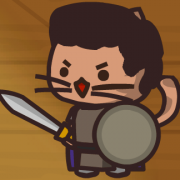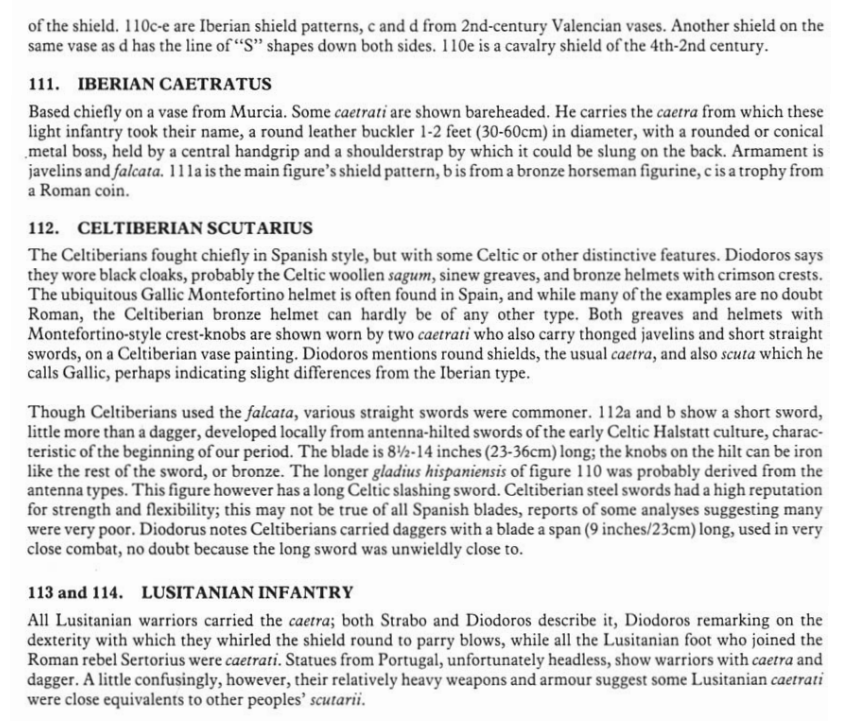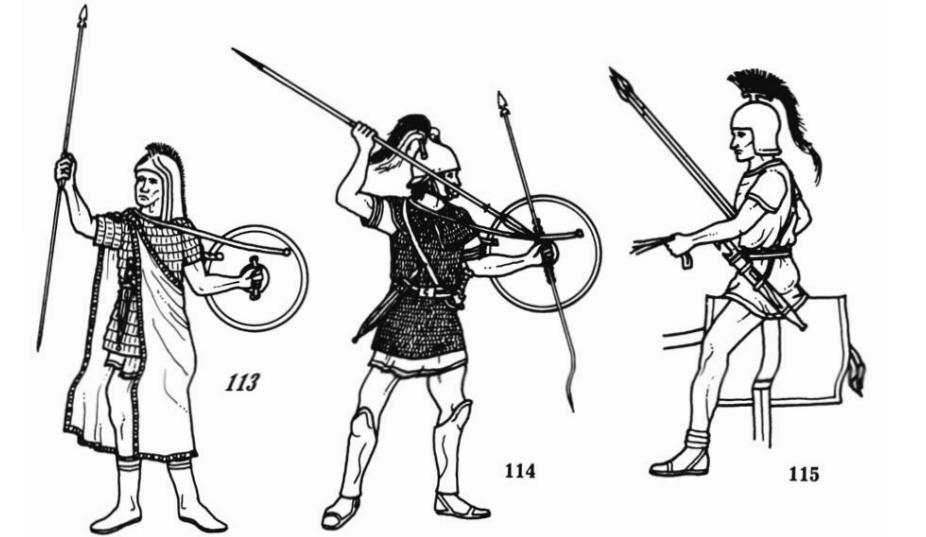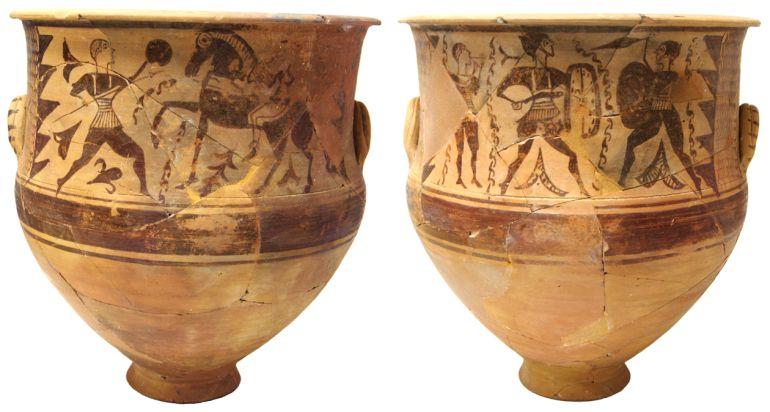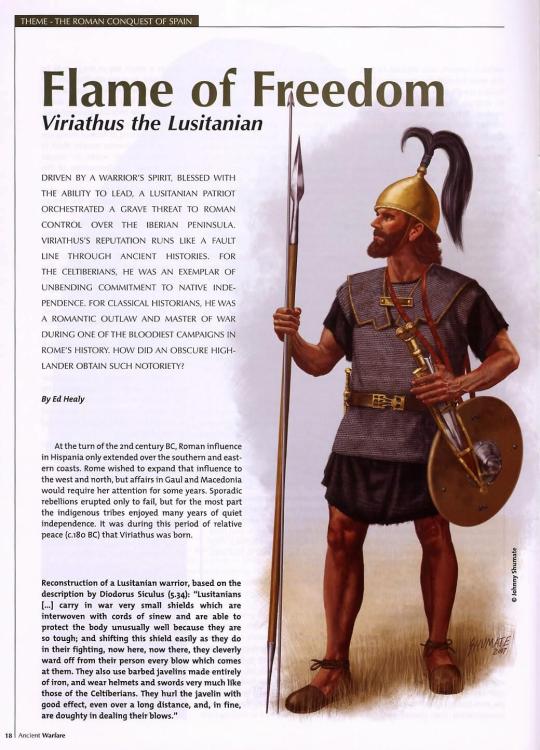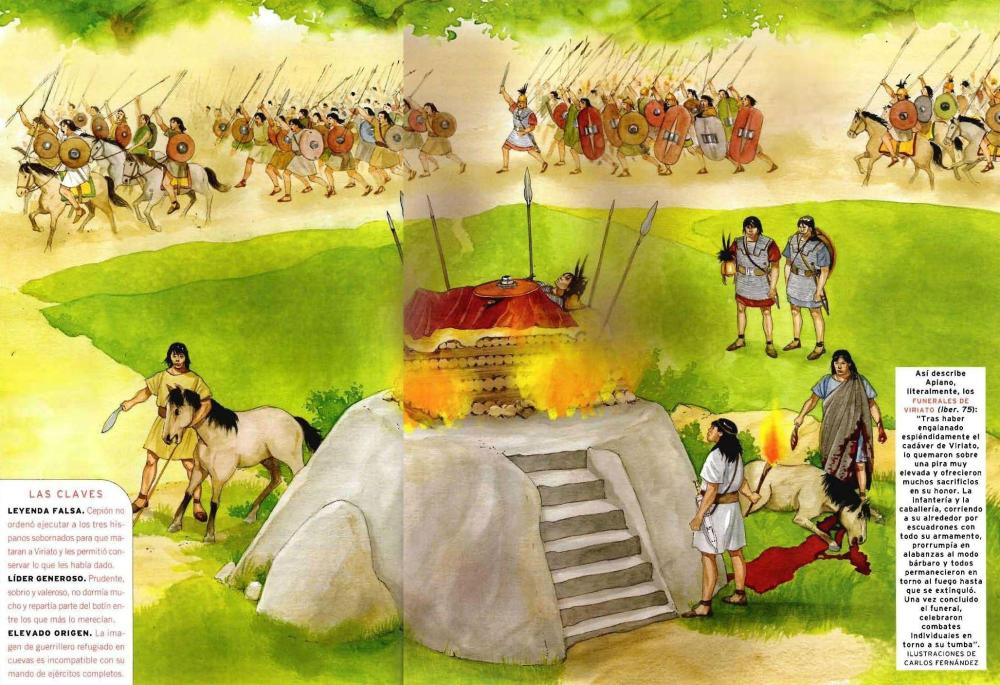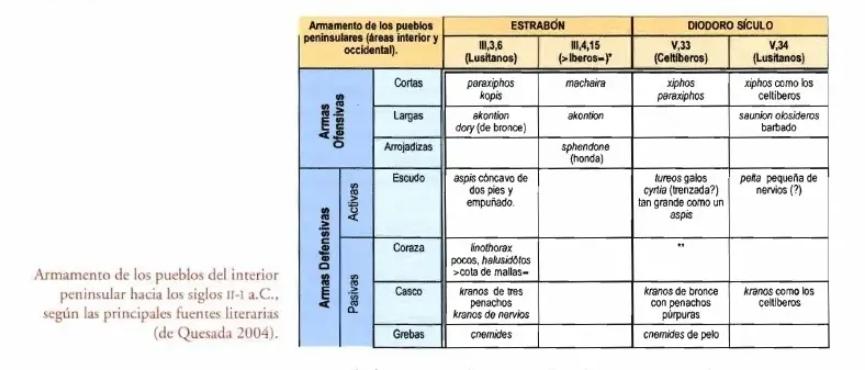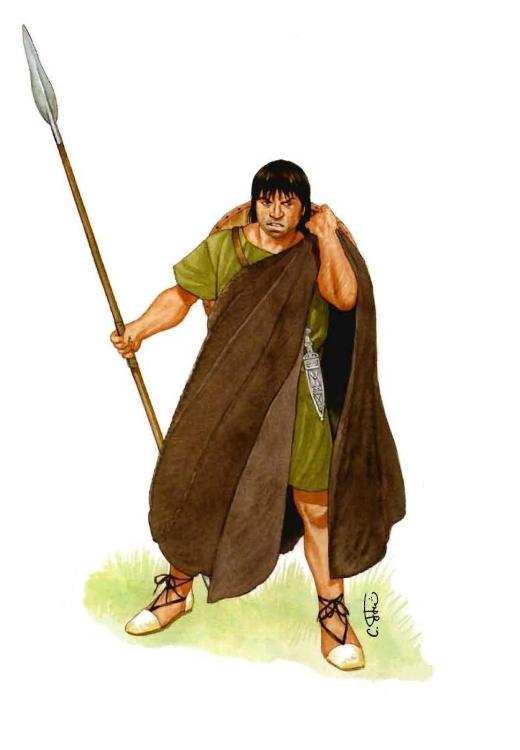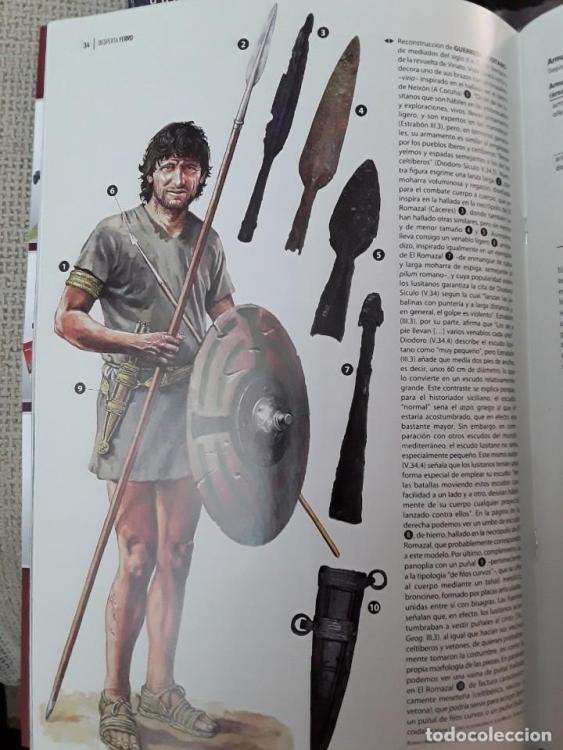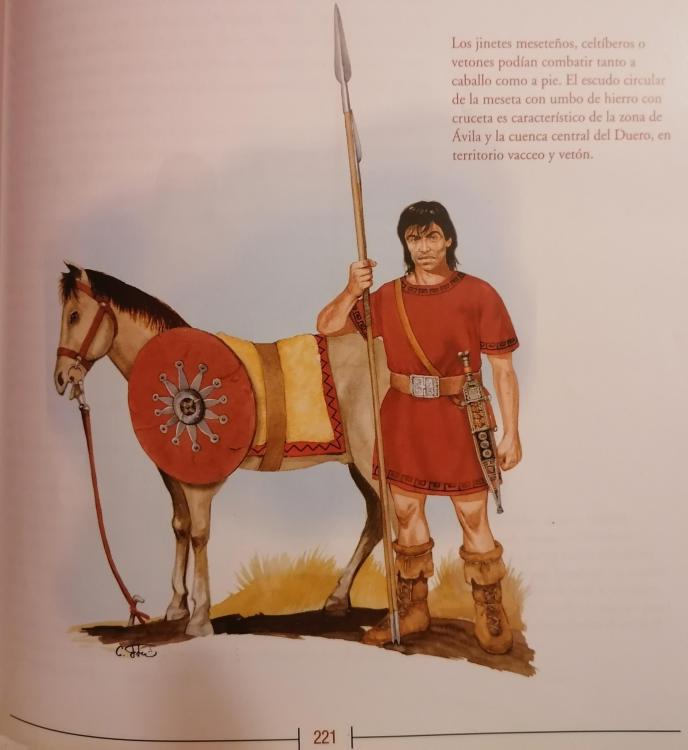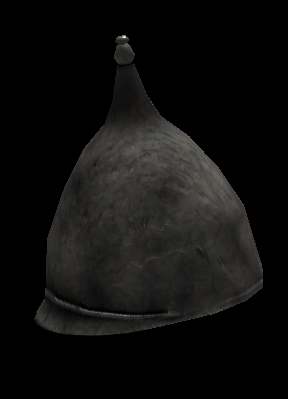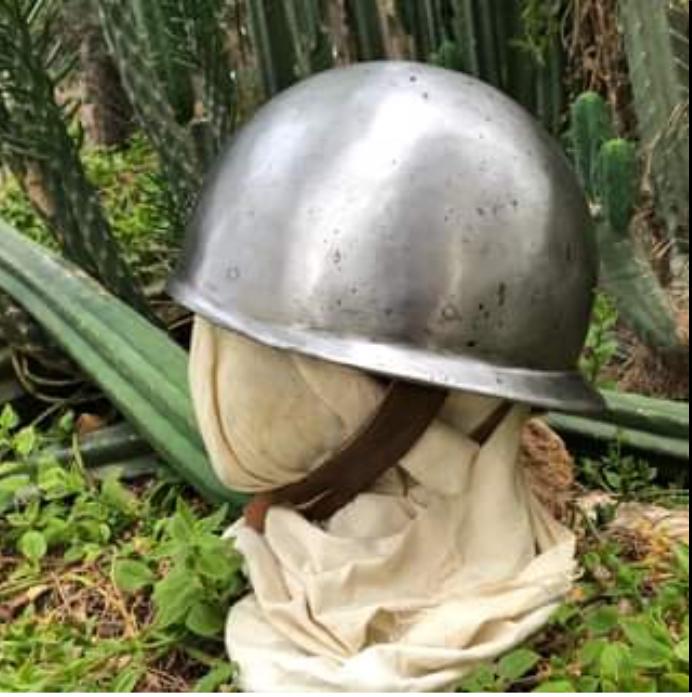-
Posts
62 -
Joined
-
Last visited
-
Days Won
3
TKogumelos last won the day on July 28
TKogumelos had the most liked content!
Recent Profile Visitors
TKogumelos's Achievements

Discens (2/14)
58
Reputation
-

===[COMMITTED]=== Iberian Unit Textures
TKogumelos replied to wackyserious's topic in Completed Art Tasks
I was referring to the helmet of the figure with the long shield but this is not bad either. -
*Some important observations: I don't know which headless statues he refers to in the description, but I have never read anything about the Lusitanians wearing metal cuirasses, the same goes for the greaves in figure 114. If we remove those details, perhaps these images can be of some use to us. In the case of the leather helmet in figure 113, it is taken from the reliefs of Osuna, which are from the Iberian zone, but since we don't know what these helmets looked like, we cannot say that this is an error.
-

===[COMMITTED]=== Iberian Unit Textures
TKogumelos replied to wackyserious's topic in Completed Art Tasks
I have only seen that representation in a very unreliable drawing, I think it is not worth. -

===[COMMITTED]=== Iberian Unit Textures
TKogumelos replied to wackyserious's topic in Completed Art Tasks
-

===[COMMITTED]=== Iberian Unit Textures
TKogumelos replied to wackyserious's topic in Completed Art Tasks
Maybe you should recolorized the helmet to more iron tone or directly change it for a non cheek-padded montefortino. -

===[COMMITTED]=== Iberian Unit Textures
TKogumelos replied to wackyserious's topic in Completed Art Tasks
The one with the long shield yes but the tricrested no. -
"6 At any rate, the Lusitanians, it is said, are given to laying ambush, given to spying out, are quick, nimble, and good at deploying troops. They have a small shield two feet in diameter, concave p73 in front, and suspended from the shoulder by means of thongs (for it has neither arm-rings nor handles). Besides these shields they have a dirk or a butcher's-knife. Most of them wear linen cuirasses; a few wear chain-wrought cuirasses and helmets with three crests, but the rest wear helmets made of sinews. The foot-soldiers wear greaves also, and each soldier has several javelins; and some also make use of spears, and the spears have bronze heads. Now some of the peoples that dwell next to the Durius River live, it is said, after the manner of the Laconians — using anointing-rooms twice a day and taking baths in vapours that rise from heated stones, bathing in cold water, and eating only one meal a day;76 and that in a cleanly77 and simple way. The Lusitanians are given to offering sacrifices, and they inspect the vitals, without cutting them out. Besides, they also inspect the veins on the side of the victim; and they divine by the tokens of touch, too. They prophesy through means of the vitals of human beings also, prisoners of war, whom they first cover with coarse cloaks, and then, when the victim has been struck beneath the vitals by the diviner, they draw their first auguries from the fall of the victim. And they cut off the right hands of their captives and set them up as an offering to the gods." Strabo. Geography III. Chapter 3: https://penelope.uchicago.edu/Thayer/e/roman/texts/strabo/3c*.html
-
I am going to continue posting the information I find about Lusitanians here, but as far as I know, there is very little and in general the experts base their investigations on what was found in the Galician area, although the degree of relationship between Galicians and Lusitanians is not entirely clear. Viriato's burial by Carlos Fernández del Castillo. We can see some Lusitanian warriors wear equipment spoiled to the Romans. Weaponry of the peoples of the peninsular interior around the 2nd-1st centuries BC according to literary sources
-
Gracias ¿No la has aplicado a ningún modelo? No distingo bien los detalles.
-
In article of 2011 Quesada said about Lusitanian weaponry: "Most of Viriato's men would cover themselves with the heavy woolen cloak or sagum and carry weapons such as a spear or a circular shield, in addition to perhaps a short antennae sword or a dagger. The typical falcata of the southeast of the peninsula was a rarity in the Lusitanian area." Reconstruction of a Lusitanian warrior of the 2nd century B.C. by Marek Szyszko.(*his shield boss was proper of the vettonic area during the 2nd century BC) Vettonic knight of the 3rd century BC reconstructed by Carlos Fernández del Castillo. (*The Lusitanian weaponry is not well known but it is believed that it would be very similar to that used by their neighbors the Vettones.)
-
Archaeologically there is hardly any information about the Lusitanians, so it is difficult to reconstruct their panoply. I have seen the tricrested helmets reconstructed in many ways, like this (in some very unreliable works of art), like Montefortinoes... I have sometimes thought that if Diodorus Siculus said that the Lusitanians used the same weaponry as the Celtiberians and the Hispanic-Chalcidic helmets have been very widespread in the Celtic area, perhaps with "three-crested helmets" he refers to it, but it is only a theory and I do not have any type of evidence to support it.
-

===[COMMITTED]=== Iberian Unit Textures
TKogumelos replied to wackyserious's topic in Completed Art Tasks
The one of the left without cheek pieces. -

===[COMMITTED]=== Iberian Unit Textures
TKogumelos replied to wackyserious's topic in Completed Art Tasks
-

===[COMMITTED]=== Iberian Unit Textures
TKogumelos replied to wackyserious's topic in Completed Art Tasks
We don’t have models of coolus helmet? It’s basically the same -

===[COMMITTED]=== Iberian Unit Textures
TKogumelos replied to wackyserious's topic in Completed Art Tasks


.thumb.jpg.b21ca1d0c15fb56b42c39b25a0a40815.jpg)


